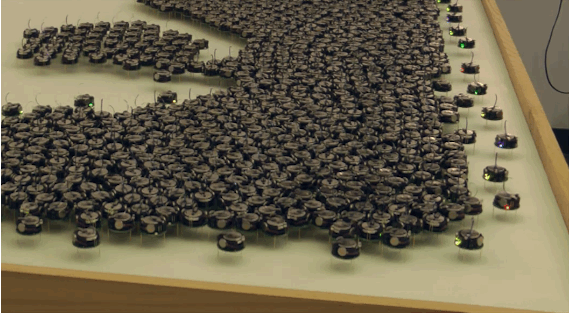
The Bot Economy
A new economic system is on the way.
What does that system look like? Obviously, it’s very hard to see what is going to replace industrial, financial capitalism while we are still inside of the system.
Despite that, it’s possible to get a sense of where it is going by looking at where technology is taking us. I recently did some scifi writing on a short book I’m writing and this is some thinking that came out of it.
_________
The area of development that’s going to have an out-sized impact on how we live day to day? In one word: bots. A bot is a term used to describe any intelligent system (aka machine intelligence) that can work autonomously.
There are lots of bots in use already. We are making more at a furious rate (there a over 6,000 machine intelligence companies right now and growing) to accomplish almost anything and it won’t be long before we have trillions of bots (mostly in the cloud).
The upshot is that bots are going to automate much of what we consider valuable in industrial capitalism, just like industrial capitalism automated the (we went from spending 95% of our time earning our food to spending 5% in two centuries) precious agriculture of feudalism before it.
As far as I can tell, there are two ways these bots will emerge in their trillions (the vast majority of those will live in the cloud, attached to sensors/data/etc.). One way is a system that will dominate and enslave the vast majority of us and the other has the potential to provide us with a way of life that is as close to an edenic revival as is possible in reality.
These two systems will likely become the source of the most bitter struggle for dominance we’ve ever experienced on this blue planet. More bitter than the fight between bureaucratic systems (communism/fascism) and market systems (democratic capitalism) in the last century.
The negative system being sold to us is based on using people to do bot-like work at subsistence levels (aka turking) in order to gather the data needed to train up bot replacement workers as quickly as possible. This negative system has the potential to employ billions of people doing the things that bots can’t do yet, and in so doing, training the bots that will replace them in a couple of months. Good early examples of negative systems include Uber (drivers as bot who will soon be replaced by bots) and Amazon (they actually have a mechanical turk service).
It’s pretty clear that this is an evolutionary endgame system. A system that makes us look more like the other two globally dominant species on the planet — ants and termites. Unfortunately, this is the system with the most momentum behind it due to the amazing valuations given to corporations that pursue it.
The other system has the most potential to radically improve the quality of human life. In this system, bots and bot ecosystems are built through creative collaboration via economic networks (or tribes). These networks pay an annuity to the people willing and able to contribute to the development of different bot “families” (ecosystems of bots that focus on gardening, 3D fabrication, dispute resolution, medical care, etc.). The system scales through peering relationships between different networks doing work in other areas.
We don’t have many good examples of these networks since most of the early development in this area is currently using open source methods. This is a problem. Open source is a system of development that doesn’t have the requisite positive feedback loops needed to build a viable economic system (open source development is like pouring water on a table, as long as you keep pouring, people can drink from it — sure, it works, but it never gets any easier over time and most participants tire from the unrequited effort).
To overcome this impasse, we need economic networking to enclose open source development in a way that provides it with the feedback loops needed to grow — from growing the number of participants to accelerating the pace of the development done (to attain speeds that are many, many times what we see in the private sector today).
Here’s what I mean.

Let’s use a recent project in synthetic biology as an example. Currently, there is an effort to build a functional open source model of a worm’s brain called OpenWorm. The model is functional in that it seeks food, evades predators, etc. The project raised lots of money on Kickstarter and they are have a solid community of developers, scientists, and tinkerers working on it.
The synthetic organism (aka bot) they are building may become a prototype for building a family of synthetic organisms that can act synergistically to do amazing things. That will make this effort very valuable over the long term.
However, because it is being built using an open source framework, it’s not going to build on itself to become a thriving system able to support a growing community of developers. That’s bad news since in order to avoid a turking future, we need to do better. To accomplish that, we need to enclose bot projects like these inside of networks/tribes. They simply can’t remain standard open source project if they are going deliver lasting change.
Here’s what I believe an economic network or tribe needs to have in order to provide the positive feedback required for growth:
- A way of inducting contributing members into the tribe (once you make a valid contribution you are in, for example)
- Sharing access to all designs/data on the network (and validating it by attaching it to a member so it’s not malware)
- Charging people outside of the network for use of the code/services (or establishing peering relationships with other networks doing the same thing in other areas) and
- Sharing the income derived from this network equally (with excess being used to fund projects that the members vote to fund).
What would a network like this look like from the inside? I suspect you’d get most of your self actualization from the networks you contribute to by teaching, training, and evolving bots to do incredibly useful stuff.
Is this possible to do right now? Of course. The tech is here. I suspect that quite a bit of the above — from IDing members to validating code to allocating reward — can be done using a bitcoin sidechain and some type of wearable wallet (think fitbit but with biomonitoring for tight ID).
Worth thinking about,
John Robb
